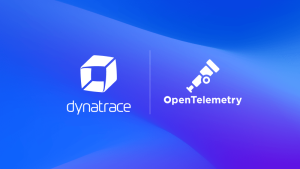The scale and complexity of Kubernetes cluster deployments can often overwhelm organizations with new challenges. That's why enhancing Kubernetes cluster management is crucial.
As organizations continue to modernize their technology stacks, many turn to Kubernetes, an open source container orchestration system for automating software deployment, scaling, and management. In fact, more than half of organizations use Kubernetes in production. While Kubernetes is often considered the operating system of the cloud, the scale and complexity of Kubernetes cluster deployments are creating new challenges for IT teams.
During a breakout session at Dynatrace Perform 2024, Alois Mayr, principal product manager at Dynatrace, and Stefano Doni, CTO at Akamas, broke down how Dynatrace and Akamas can help organizations enhance Kubernetes cluster management.
The top Kubernetes challenges facing enterprises
“Everybody is using Kubernetes,” Mayr said. “Everybody knows it’s important.”
Despite its production popularity, however, problems with Kubernetes persist. Five of the most common include cluster instability, resource and cost management, security, observability, and stress on engineering teams.
“Stability is a big issue,” Mayr said. “There are lots of moving parts and ripple effects that can happen when you run your services on Kubernetes. Engineering teams are overwhelmed with stuff to do.”
While Kubernetes’ usability and ubiquity make it the ideal environment for cloud-based production tasks, operational oversight and resource management challenges can frustrate DevOps efforts to drive efficiency.
Improving the Kubernetes experience
To help teams improve Kubernetes management, Dynatrace has released a new application focused on the Kubernetes experience.
“The welcome screen gives you a high-level overview of what’s happening,” Mayr said. “On the left, you have well-known components, such as clusters, nodes, namespaces, and workloads. At the top, you have the Davis AI status bar that tells you if things are healthy or not.”
Providing at-a-glance data makes it possible for teams to quickly identify high-level issues and then drill down into the details. This is critical, as teams often feel many Kubernetes issues before they see them.
Consider a sudden drop in performance. While the end result is obvious, the underlying issue may be obfuscated, leaving teams with the time-consuming task of tracking down the issue and identifying the source. With the Davis AI status bar, teams can quickly connect problems to causes.
“We can click on a cluster and see the details. Then, we can see how many nodes and workloads are running,” Mayr said. “We can see that one node has memory pressure. It’s using 1.5 cores, but only 0.2 cores have been requested. As a result, the pod has been evicted.”
The Dynatrace Kubernetes app also provides process ownership data, ensuring information is directed to the right team and root causes are addressed.
Realizing the benefits of application-aware optimization
Akamas is a Dynatrace partner that provides an autonomous and continuous optimization solution for Kubernetes-based applications.
“We use AI to optimize the configuration of the software stack,” Doni said, highlighting how Akamas works by taking into account infrastructure and application metrics at the same time to achieve its optimization goals. “Additionally, we are full-stack and goal-oriented. We created a special-purpose AI to consider both performance and safety [of stack configurations], but the objective of your AI is something that you can decide.”
First, Akamas collects metrics, then recommends configuration improvements and applies these recommendations. Organizations can choose to have these recommendations implemented automatically or have users review them before deployment.
“Costs go down as we apply what Akamas suggests,” Doni noted, speaking to the benefits of the recommendations in practice. “And as the cost is going down, we’re also monitoring to see what’s happening to application performance.”
For Doni, it’s all about balance. “We can reduce the cost,” he said, “but it’s also important to improve application performance. It’s not just a cost-reduction tool. You can ask for the best configuration to reduce latency or improve the user experience.”
Data supports those declarations. By implementing Akamas, organizations can see a 60% reduction in application demand for cloud services while maintaining the same app performance.
Besides cost reduction, higher throughput and lower response times can enhance the user experience by up to 30%. And with automatic application tuning, teams spend less time on manually testing and reviewing configurations, resulting in up to five times the productivity of performance engineers, DevOps, and SREs when it comes to application optimization.
Taking control of Kubernetes with AI-driven optimization
Kubernetes is a powerful production tool, but it’s not perfect. Expanding Kubernetes environments can lead to stability, security, and observability challenges. In fact, according to recent Dynatrace research, 76% of technology leaders say the dynamic nature of Kubernetes makes it more difficult to maintain visibility into this architecture compared with traditional technology stacks. As a result, teams can spend more time chasing down issues instead of making the best use of Kubernetes features and functions.
Dynatrace and Akamas work together to help organizations pinpoint problems, determine ownership, and implement autonomous processes that help reduce the risk of ongoing issues. Most importantly, however, the new Dynatrace Kubernetes app puts IT teams in control.
“We try to follow the idea of self-service so users can onboard their own clusters,” Mayr said. “Onboarding takes just a few minutes.”
Equipped with at-a-glance Davis AI dashboards from Dynatrace and AI-driven optimization from Akamas, organizations can improve Kubernetes cluster management and ensure they’re making the most of the cloud’s most popular operating system.
For more information on the importance of enhancing Kubernetes cluster management, watch the full session, “Scale and manage Kubernetes clusters using Dynatrace to empower platform engineering teams.” And for the latest news from Perform, check out our guide.





Looking for answers?
Start a new discussion or ask for help in our Q&A forum.
Go to forum